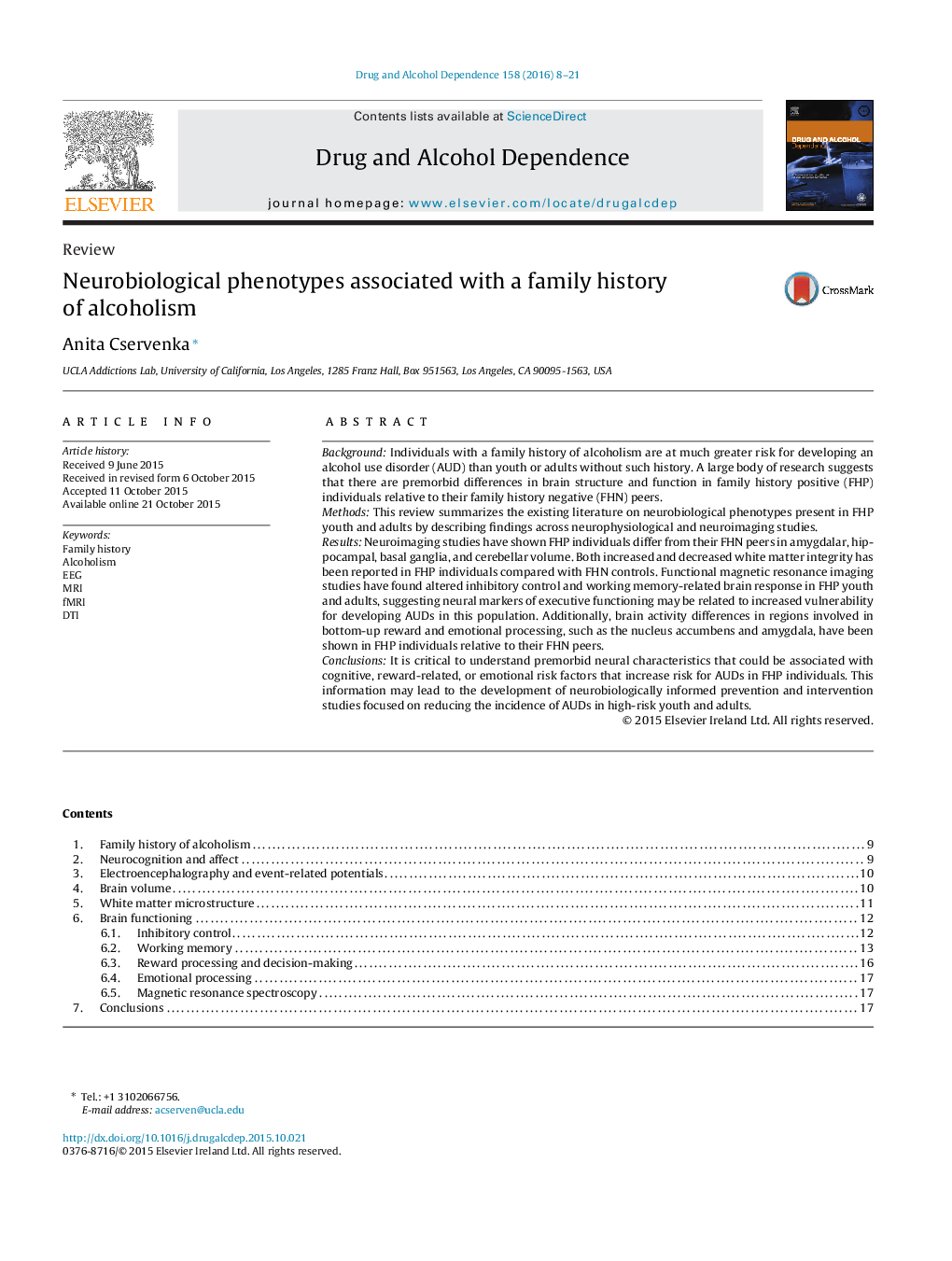| کد مقاله | کد نشریه | سال انتشار | مقاله انگلیسی | نسخه تمام متن |
|---|---|---|---|---|
| 1069734 | 1486133 | 2016 | 14 صفحه PDF | دانلود رایگان |
• Family history of alcoholism (FHP) is associated with premorbid subcortical and cerebellar brain volumetric alterations.
• FHP individuals have both increased and decreased white matter microstructure integrity relative to their peers (FHN).
• Brain activity differences are present between FHP and FHN individuals during executive functioning, reward, and emotion processing tasks.
• Understanding premorbid neural characteristics in familial alcoholism may help inform studies focused on reducing the incidence of alcohol abuse in at-risk youth and adults.
BackgroundIndividuals with a family history of alcoholism are at much greater risk for developing an alcohol use disorder (AUD) than youth or adults without such history. A large body of research suggests that there are premorbid differences in brain structure and function in family history positive (FHP) individuals relative to their family history negative (FHN) peers.MethodsThis review summarizes the existing literature on neurobiological phenotypes present in FHP youth and adults by describing findings across neurophysiological and neuroimaging studies.ResultsNeuroimaging studies have shown FHP individuals differ from their FHN peers in amygdalar, hippocampal, basal ganglia, and cerebellar volume. Both increased and decreased white matter integrity has been reported in FHP individuals compared with FHN controls. Functional magnetic resonance imaging studies have found altered inhibitory control and working memory-related brain response in FHP youth and adults, suggesting neural markers of executive functioning may be related to increased vulnerability for developing AUDs in this population. Additionally, brain activity differences in regions involved in bottom-up reward and emotional processing, such as the nucleus accumbens and amygdala, have been shown in FHP individuals relative to their FHN peers.ConclusionsIt is critical to understand premorbid neural characteristics that could be associated with cognitive, reward-related, or emotional risk factors that increase risk for AUDs in FHP individuals. This information may lead to the development of neurobiologically informed prevention and intervention studies focused on reducing the incidence of AUDs in high-risk youth and adults.
Journal: Drug and Alcohol Dependence - Volume 158, 1 January 2016, Pages 8–21
